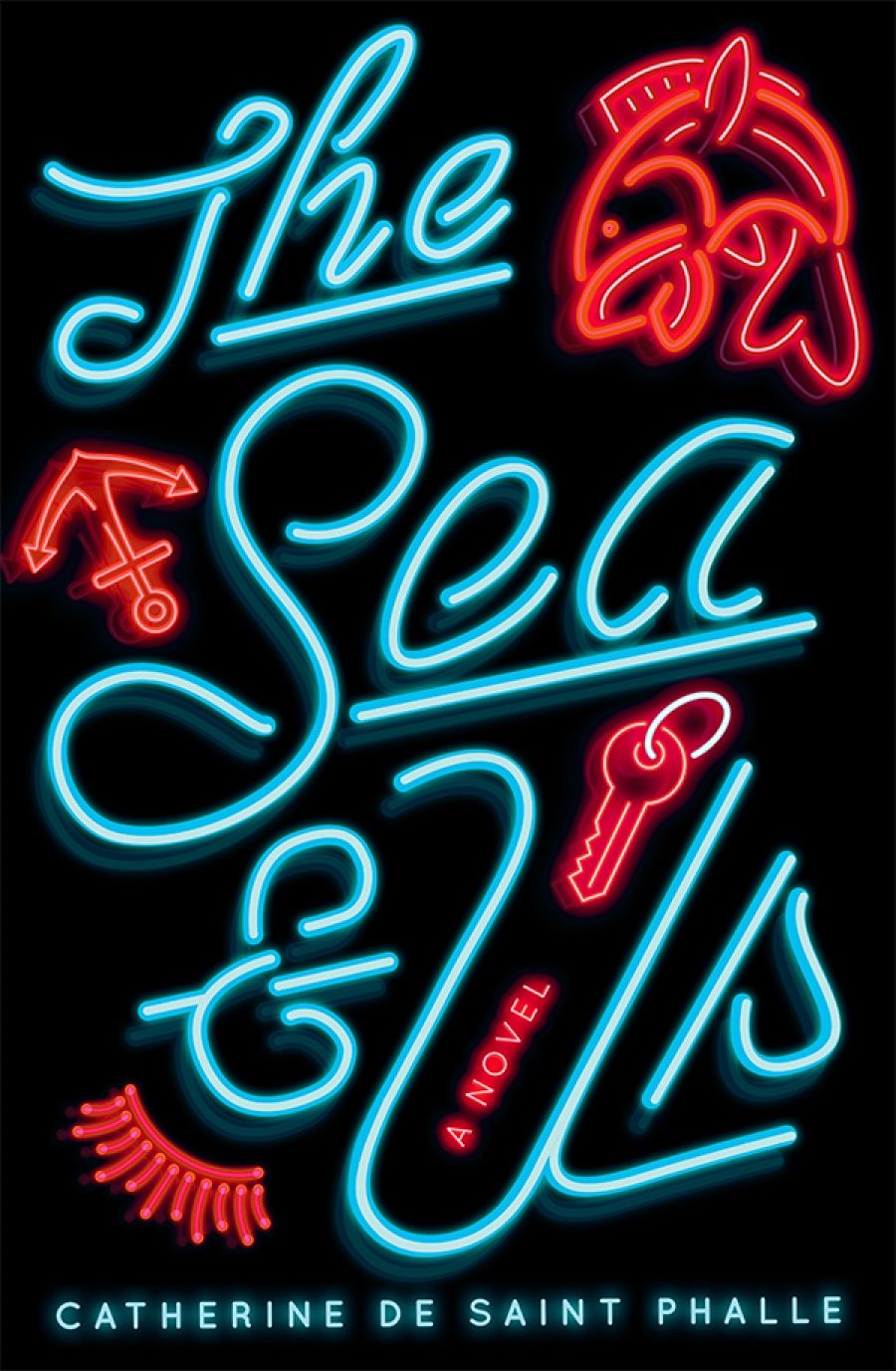
- Free Article: No
- Contents Category: Fiction
- Review Article: Yes
- Online Only: No
- Custom Highlight Text:
Catherine de Saint Phalle already had an impressive publication history – five novels written in French and one in English – when her elegantly written, often heart-breaking memoir Poum and Alexandre was shortlisted for the 2017 Stella Prize. Her new novel, The Sea and Us, is her third book written in English since she came to Australia in 2003. Its title works both literally and symbolically. The Sea and Us is the name of the Melbourne fish and chip shop above which the middle-aged narrator, Harold, rents a room, having returned to his childhood city after eighteen years of living and working in South Korea.
- Grid Image (300px * 250px):

- Book 1 Title: The Sea and Us
- Book 1 Biblio: Transit Lounge, $25.50 hb, 186 pp, 9781925760415
The sea, and other forms of water, are also used to evoke his awareness of psychological displacement, and his struggle to find a meaningful identity. Early in the novel, invoking the maritime categorisation of what he calls the ‘disconsolate objects’ of flotsam, jetsam, ligan, and derelict, Harold wonders, with his characteristic sense of detachment, whether he can be rescued or reclaimed in his new Melbourne life. He also attributes his sense of being unmoored from his Czech inheritance – at one point he ‘wonder[s] if this is a Czech thing, losing one’s existence’ – as well as from some unspecified adolescent trauma that leaves him feeling unsettled and confused.
 Catherine de Saint Phalle (photograph via The Stella Prize)
Catherine de Saint Phalle (photograph via The Stella Prize)
The early stages of the novel, which alternate between his South Korean past and his Australian present, create sympathy for his sense of loss. His happy memories of his lover Ha-yoon (sitting with her on the banks of the Cheonggyechon Stream feels like ‘a watery belonging’) are shattered by her betrayal. Using the symbol of pottery to which he will elsewhere return, he describes being ‘broken up – two words, two shards of poetry’. However, his memories of other people raise questions about his limitations as a character and narrator. While he admires the apparent self-possession of Sung-ki, a homeless old man, and Marylou, a young, seemingly resilient sex worker, his punning description of them as his ‘Seoul mates’ feels unwittingly dismissive of the cruel realities of their lives. His perception of the master potter, Do-yun, is similarly suspect, suggesting as it does his own desire for completion instead of an awareness of the elderly man as a separate individual. In each case, the novel subtly suggests that for all Harold’s astute observations, he remains oblivious to the more complex dimensions of the characters’ lives.
Once returned to Melbourne, he begins to experience his new dwelling as a ‘raft’ – a metaphor that suggests a precarious but necessary form of safety. Two Australian characters are used to suggest more hopeful possibilities for the future: his landlady, Verity, and Ben, the embodiment for Harold of youthful enthusiasm and independence. Harold’s narration suggests a growing sense of optimism in terms of purposive actions – painting and furnishing his new home, resuming his pottery – and in the breezier tone he adopts. Meeting Verity for the first time, he thinks: ‘I like people who make a comment before greeting a perfect stranger. It seems to announce a busy inner life that can’t be switched off on command.’ While he is attracted to the woman’s genial surface, his use of the reductive word ‘busy’ tends to reduce her to the stereotype of the cheery landlady: a cliché that the story will later brutally dispel. This is also the case with his belated reassessment of Marylou, one which generates a profound change in him from being derelict (cargo one has no hope of reclaiming) to ligan (wreckage which can ultimately be saved).
The creation of Harold’s intense inner life is for me the great strength of the novel. Looking outward to the physical world of people and places, he is given to inventive analogies and unusual turns of phrase. Perhaps the most idiosyncratic example of his use of analogy is his comparison of female pubic hair to ‘some ring road around the city at night, wild and purring with cars’. The ludicrousness of this idea proves to be the point when later in the novel Harold is confronted by the irreducible reality of a suffering female body. He is also inclined to think in terms of literary allusions, a strategy that begins to feel less like the sign of a cultivated mind and more akin to self-protective self-enclosure. The novel is also good at registering the disjunction between his rich inner life and the ordinariness of his speech; there is a pervasive sense that the surface he presents to the world does not, and perhaps cannot, correspond to his subterranean self.
In formal terms, The Sea and Us has the poetic compression of a novella; it offers complex meanings in the relatively brief space of 186 pages. The final stage of the narrative shifts to a radically different mode, in which Harold’s linguistically embellished language and reflective tone are replaced by conspicuously pared-back prose and urgent pacing. This sudden change in form and style enacts Harold’s unexpected release from paralysing self-consciousness into the joy of connection with others. I was not entirely convinced by some resolutions and coincidences at the end, but The Sea and Us excels in its depiction of the anxieties, flaws, and hopes of a damaged man. Existentially adrift but longing to live on the solid ground of human community, Harold joins de Saint Phalle’s gallery of intriguing, at times eccentric, and always engaging characters.


Comments powered by CComment